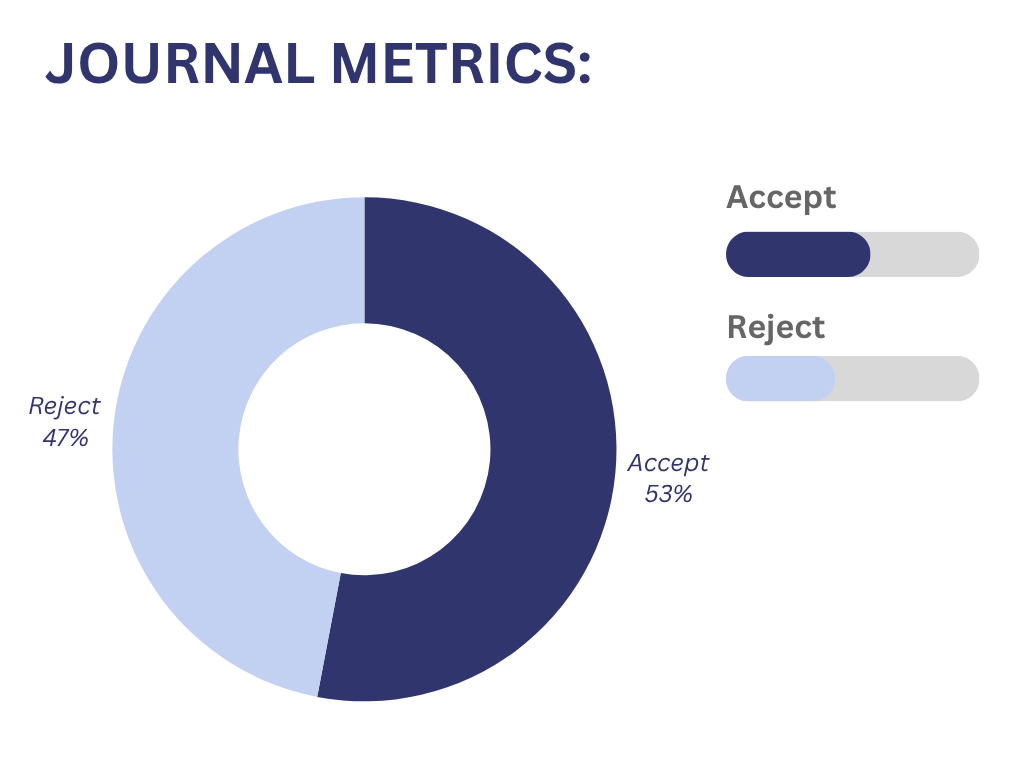Evaluation of Protectivity of Aquifer Using Dar – ZarroukParameters in Ikot Ekpene Urban and its Environs
Abstract
The protective ability of hydrogeological units in the southern Nigerian region of Ikot Ekpene Urban and its environs was assessed in this work using the resistivity approach, namely vertical electrical sounding and electrical resistivity tomography techniques. The lithological data from boreholes available indicates that the research region consists of three to four sandy strata (fine, coarse, and gravelly) with clay intercalations in some locations. With resistivity values ranging from 214.4 to 2839.0 Ωm, the third layer can be classified as gravelly sands in certain places or fine or coarse sands in other. Found between 9.0 and 86.6 meters below the surface, this layer is the main aquifer in the area. Using anisotropy coefficients, resistivity reflection, and longitudinal conductance, the aquifer protectivity was evaluated. Four zones are formed within the research area based on the protectivity grade. Regarding the proportion of exploitable aquifers, the zones are classified as poor (65%), weak (10%), moderate (20%), and good (5%). The surface topography affects the water table, and in the center of the region a sinkhole develops. Utility pipes may be buried safely inside the stratum without fear of corrosion-induced damage because the heterogeneous topsoil has been shown to be noncorrosive. These results provide important new information for creating a successful groundwater and waste disposal plan in the area.
Keywords:
Anisotropy coefficient , Longitudinal conductance , Protectivity rating, Resistivity reflection coefficientReferences
- [1] Reilly, T. E., Dennehy, K. F., Alley, W. M., & Cunningham, W. L. (2008). Ground-water availability in the united states. US Geological Survey Circular. https://doi.org/10.3133/cir1323
- [2] George, N. J., Ibanga, J. I., & Ubom, A. I. (2015). Geoelectrohydrogeological indices of evidence of ingress of saline water into freshwater in parts of coastal aquifers of Ikot Abasi, southern Nigeria. Journal of african earth sciences, 109, 37–46. DOI: 10.1016/j.jafrearsci.2015.05.001
- [3] Thomas, J. E., George, N. J., Ekanem, A. M., & Nsikak, E. E. (2020). Electrostratigraphy and hydrogeochemistry of hyporheic zone and water-bearing caches in the littoral shorefront of Akwa Ibom State University, Southern Nigeria. Environmental monitoring and assessment, 192(8), 1–19. DOI: 10.1007/s10661-020-08436-6
- [4] Bayewu, O. O., Oloruntola, M. O., Mosuro, G. O., Laniyan, T. A., Ariyo, S. O., & Fatoba, J. O. (2018). Assessment of groundwater prospect and aquifer protective capacity using resistivity method in Olabisi Onabanjo University campus, Ago-Iwoye, Southwestern Nigeria. NRIAG journal of astronomy and geophysics, 7(2), 347–360. DOI: 10.1016/j.nrjag.2018.05.002
- [5] Umar, N. D., & Igwe, O. (2019). Geo-electric method applied to groundwater protection of a granular sandstone aquifer. Applied water science, 9(4), 1–14. DOI: 10.1007/s13201-019-0980-2
- [6] Esu, E. O., & Amah, E. A. (1999). Physicochemical and bacteriological quality of natural waters in parts of Akwa Ibom and Cross River States, Nigeria Global J. Pure and applied science, 5(4), 525–534.
- [7] Uchegbu, S. N. (2002). Issues and strategies in environmental planning and management in nigeria.enugu-nigeria. Spotlite publishers.
- [8] Oseji, J. O., Egbai, J. C., Okolie, E. C., & Ese, E. C. (2018). Investigation of the aquifer protective capacity and groundwater quality around some open dumpsites in sapele delta state, Nigeria. Applied and environmental soil science, 2018(1), 3653021. DOI: 10.1155/2018/3653021
- [9] Olorunfemi, M. O., Ojo, J. S., & Akintunde, O. M. (1999). Hydro-geophysical evaluation of the groundwater potentials of the Akure Metropolis, Southwestern Nigeria. Journal of mining and geology, 35(2), 207–228.
- [10] Adeniji, A. E., Omonona, O. V., Obiora, D. N., & Chukudebelu, J. U. (2014). Evaluation of soil corrosivity and aquifer protective capacity using geoelectrical investigation in Bwari basement complex area, Abuja. Journal of earth system science, 123(3), 491–502. DOI: 10.1007/s12040-014-0416-1
- [11] Henriet, J. P. (1976). Direct Applications of the dar zarrouk parameters in ground water surveys. Geophysical prospecting, 24(2), 344–353. DOI: 10.1111/j.1365-2478.1976.tb00931.x
- [12] Oladapo, M., & Akintorinwa, O. (2007). Hydrogeophysical study of Ogbese South Western Nigeria. Global journal of pure and applied sciences, 13(1), 55–61. DOI: 10.4314/gjpas.v13i1.16669
- [13] Abiola, O., Enikanselu, P. A., & Oladapo, M. I. (2009). Groundwater potential and aquifer protective capacity of overburden units in Ado-Ekiti, southwestern Nigeria. International journal of physical sciences, 4(3), 120–132.
- [14] Mogaji, K. A., Omosuyi, G. O., & Olayanju, G. M. (2011). Groundwater system evaluation and protective capacity of overburden material at Ile-olujI, Southwestern Nigeria. Journal of geology and mining research, 3(11), 294–304. http://www.academicjournals.org/JGMR
- [15] Ekanem, A. M. (2020). Georesistivity modelling and appraisal of soil water retention capacity in Akwa Ibom State University main campus and its environs, Southern Nigeria. Modeling earth systems and environment, 6(4), 2597–2608. DOI: 10.1007/s40808-020-00850-6
- [16] Ekanem, A. M., George, N. J., Thomas, J. E., & Nathaniel, E. U. (2020). Empirical relations between Aquifer geohydraulic–geoelectric properties derived from surficial resistivity measurements in parts of akwa ibom state, Southern Nigeria. Natural resources research, 29(4), 2635–2646. DOI: 10.1007/s11053-019-09606-1
- [17] Ekanem, A. M., Akpan, A. E., George, N. J., & Thomas, J. E. (2021). Appraisal of protectivity and corrosivity of surficial hydrogeological units via geo-sounding measurements. Environmental monitoring and assessment, 193(11), 1–22. DOI: 10.1007/s10661-021-09518-9
- [18] Ayuk, M. A. (2020). Groundwater aquifer vulnerability assessment using a dar-zarrouk parameter in a proposed aboru residential estate, Lagos State, Nigeria. Journal of applied sciences and environmental management, 23(12), 2081. DOI: 10.4314/jasem.v23i12.2
- [19] Yeboah-Forson, A., & Whitman, D. (2014). Electrical resistivity characterization of anisotropy in the Biscayne Aquifer. Groundwater, 52(5), 728–736. DOI: 10.1111/gwat.12107
- [20] Bała, M., & Cichy, A. (2015). Evaluating electrical anisotropy parameters in miocene formations in the cierpisz deposit. Acta geophysica, 63(5), 1296–1315. DOI: 10.2478/s11600-014-0252-3
- [21] Umoh, S. D., & Etim, E. E. (2013). Determination of heavy metal contents from dumpsites within. The international journal of engineering and science, 2(2), 123–129.
- [22] George, N. J., Ubom, A. I., & Ibanga, J. I. (2014). Erratum: Integrated approach to investigate the effect of leachate on groundwater around the Ikot ekpene dumpsite in Akwa Ibom state, Southeastern Nigeria. International journal of geophysics, 2014. DOI: 10.1155/2014/636129
- [23] Mbipom, E. W., Okwueze, E. E., & Onwuegbuche, A. A. (1996). Estimation of transmissivity using VES data from the Mbaise area of Nigeria. Nigerian journal of physics, 85, 28–32.
- [24] K. C. Short, A. J. S. (1967). Outline of geology of Niger Delta. AAPG bulletin, 51(5), 761–779. DOI: 10.1306/5d25c0cf-16c1-11d7-8645000102c1865d
- [25] Stacher, P. (1995). Present understanding of the Niger Delta hydrocarbon habitat. In Geology of deltas (pp. 257–267). Taylor & Francis.
- [26] Reijers, T. J. A., & Petters, S. W. (1987). Depositional environments and Diagenesis of Albian Carbonates on the Calabar Flank, Se Nigeria. Journal of petroleum geology, 10(3), 283–294. DOI: 10.1111/j.1747-5457.1987.tb00947.x
- [27] Esu, E. O., Okereke, C. S., & Edet, A. E. (1999). A regional hydrostratigraphic study of Akwa Ibom State, southeastern Nigeria. Global journal of pure and applied sciences, 5, 89–96.
- [28] Edet, A. E., & Okereke, C. S. (2002). Delineation of shallow groundwater aquifers in coastal plain sands of Calabar area (Southern Nigeria) using surface resistivity and hydrogeological data. Journal of african earth sciences, 35(3), 433–443. DOI: 10.1016/S0899-5362(02)00148-3
- [29] Asaah, A. V. (2011). Geology and mineral resources of nigeria. Economic Geology. Springer. https://doi.org/10.2113/econgeo.106.3.523
- [30] Ward, S. H. (1987). Electrical methods in geophysical prospecting. Methods in experimental physics, 24, 265–375. DOI: 10.1016/S0076-695X(08)60601-8
- [31] Dobrin, M. B. (1981). Introduction to geophysical prospecting. , 4 Introduction to geophysical prospecting. 3rd edition. (Vol. 4). McGraw-hill New York.
- [32] Zohdy, a. a. R., Eaton, G. P., & Mabey, D. R. (1974). Application of surface geophysics to ground-water investigations. Techniques of water-resources investigations of the united states geological survey, 123. DOI: 10.3133/twri02D1
- [33] Vander Velpen, B. P. A., & Sporry, R. J. (1993). RESIST. A computer program to process resistivity sounding data on pc compatibles. Computers and geosciences, 19(5), 691–703. DOI: 10.1016/0098-3004(93)90102-B
- [34] Bandani, E., & Moghadam, M. A. (2011). Application of groundwater mathematical model for assessing the effects of galoogah dam on the shooro aquifer- Iran. European journal of scientific research, 54(4), 499–511.
- [35] Loke, M. H., & Barker, R. D. (1996). Rapid least-squares inversion of apparent resistivity pseudosections by a quasi-Newton method. Geophysical prospecting, 44(1), 131–152. DOI: 10.1111/j.1365-2478.1996.tb00142.x
- [36] Loke, M. H., & Dahlin, T. (2002). A comparison of the Gauss-Newton and quasi-Newton methods in resistivity imaging inversion. Journal of applied geophysics, 49(3), 149–162. DOI: 10.1016/S0926-9851(01)00106-9
- [37] Loke, M. H., Acworth, I., & Dahlin, T. (2003). A comparison of smooth and blocky inversion methods in 2D electrical imaging surveys. Exploration geophysics, 34(3), 182–187. DOI: 10.1071/EG03182
- [38] Bello, A. M. A., Makinde, V., & Coker, J. O. (2010). Geostatistical analyses of accuracies of geologic sections derived from interpreted vertical electrical soundings (VES) data: an examination based on VES and Borehole data collected from the Northern Part of Kwara State, Nigeria. Journal of american science, 6(2), 24–31.
- [39] Chemali, R., Gianzero, S., & Su, S. M. (1987). The effect of shale anisotropy on focused resistivity devices. SPWLA 28th annual logging symposium. SPWLA. https://www.onepetro.org/
- [40] George, N. J., Obianwu, V. I., Akpan, A. E., & Obot, I. B. (2010). Assessment of shallow aquiferous units and their coefficients of anisotropy in the coastal plain sands of Southern Ukanafun local government area, Akwa Ibom State, Southern Nigeria. Indian archives of physics res, 1(2), 118–128.
- [41] Agunloye, O. (1984). Soil aggressivity along steel pipeline route at Ajaokuta southwestern Nigeria. Journal of mining and geology, 21, 97–101.
- [42] Oladapo, M. I., Mohammed, M. Z., Adeoye, O. O., & Adetola, B. A. (2004). Geoelectrical investigation of the Ondo State Housing Corporation Estate Ijapo Akure, southwestern Nigeria. Journal of mining and geology, 40(1), 41–48. DOI: 10.4314/jmg.v40i1.18807
- [43] Mosuro, G. O., Omosanya, K. O., Bayewu, O. O., Oloruntola, M. O., Laniyan, T. A., Atobi, O., … Adekoya, F. (2017). Assessment of groundwater vulnerability to leachate infiltration using electrical resistivity method. Applied water science, 7(5), 2195–2207. DOI: 10.1007/s13201-016-0393-4
- [44] Mc-Nell, J. D. (1980). Electrical conductivity of soil and rocks. Geonics limited, 17, 1197–1211. https://geonics.com/pdfs/technicalnotes/tn5.pdf



